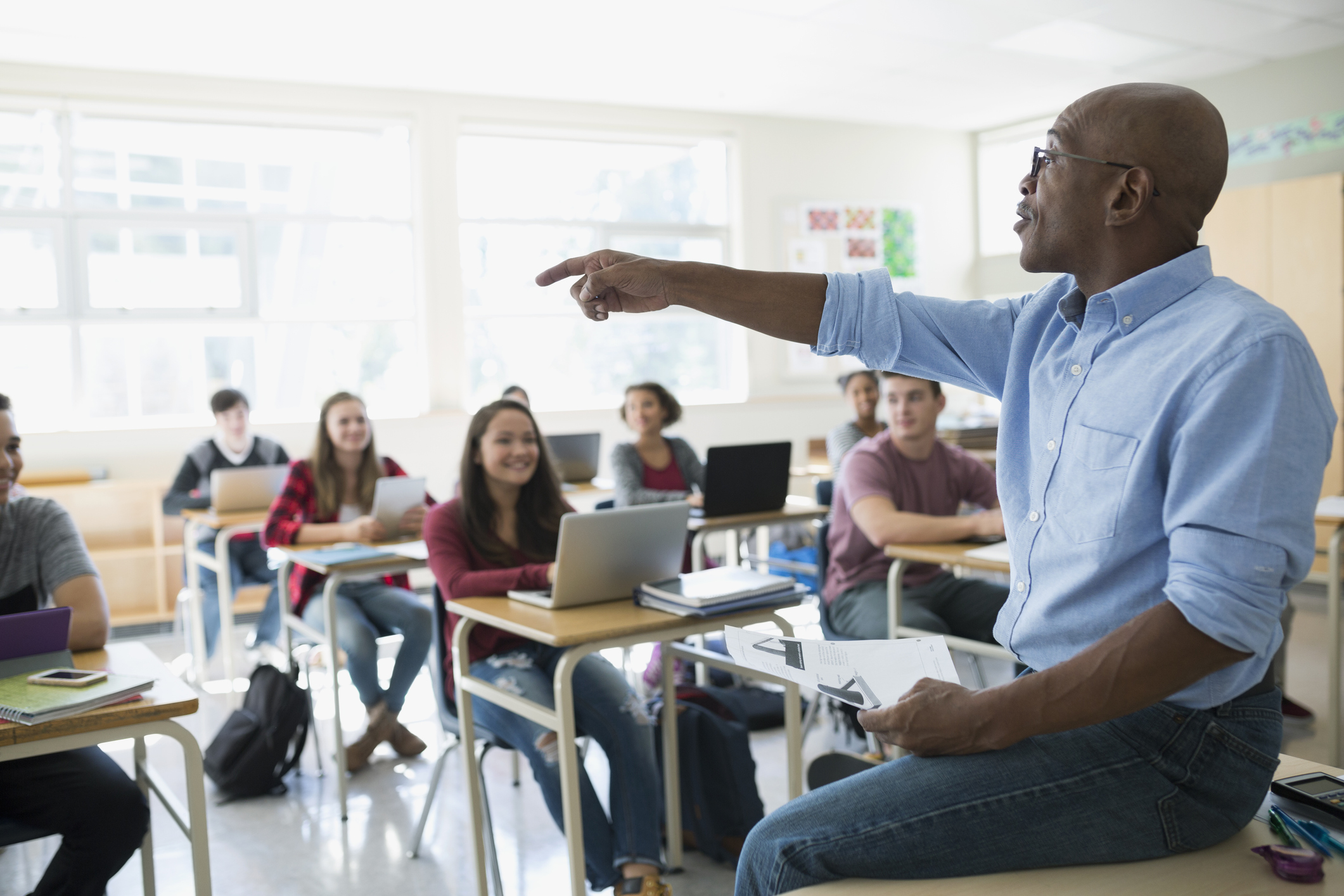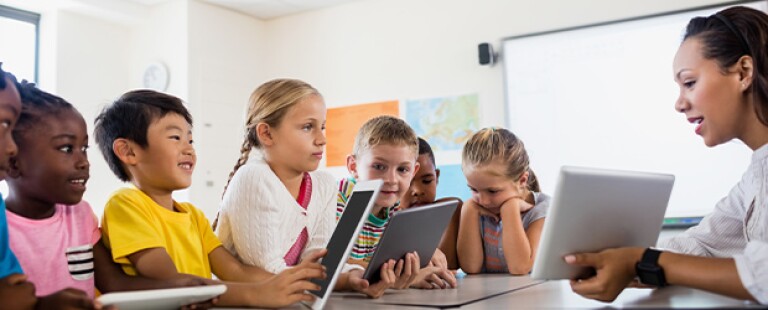Comprehensive Primary Science Tuition Singapore for Primary School Students
Comprehensive Primary Science Tuition Singapore for Primary School Students
Blog Article
Exploring the Various Teaching Methods in Primary Science Education And Learning Today
The landscape of primary scientific research education is advancing, with various mentor techniques obtaining importance in modern class. Inquiry-based understanding, hands-on experiments, and the assimilation of technology are redefining just how instructors involve young minds. Additionally, collective techniques and set apart direction are being used to provide to the diverse needs of pupils, improving both engagement and understanding. As we analyze these approaches, questions develop about their performance and the implications for future instructional practices. What might these shifts in technique mean for the next generation of learners?
Inquiry-Based Knowing
Inquiry-Based Understanding (IBL) is a pedagogical technique that urges students to check out clinical principles through doubting, examination, and hands-on experimentation. This technique stresses the role of pupils as active participants in their discovering, advertising vital reasoning and analytic abilities. By engaging with real-world questions, trainees end up being inspired and interested, which enhances their understanding of scientific concepts.
In IBL, teachers serve as facilitators, guiding trainees as they browse their questions as opposed to supplying details straight. This student-centered strategy allows for differentiation, fitting different finding out paces and styles. Students develop skills in creating theories, creating experiments, and examining data, which are critical for clinical proficiency.
Furthermore, IBL promotes partnership among trainees, encouraging them to share searchings for and concepts. This collective inquiry advertises social skills and a sense of community within the class. The procedure of query encourages strength, as trainees learn to welcome failure as a tipping stone towards understanding.
Hands-On Experiments
Hands-on experiments are a vital part of efficient science education and learning, matching the principles of inquiry-based discovering. These experiments allow pupils to engage straight with scientific concepts, cultivating a deeper understanding via experiential discovering. By controling materials and observing results, young students can comprehend abstract concepts in tangible ways.
Such activities promote important thinking and analytical abilities, as trainees hypothesize outcomes, conduct experiments, and examine results. This process urges them to ask concerns, refine their understanding, and establish a clinical frame of mind. Furthermore, hands-on experiments can be customized to varied discovering styles, ensuring that all students have the possibility to involve meaningfully with the web content.
Furthermore, hands-on experiments commonly encourage collaboration among peers, advertising synergy and communication abilities. Operating in groups allows students to share ideas, discuss searchings for, and pick up from one an additional, which boosts their total instructional experience.
Including hands-on experiments into the primary science curriculum not only enriches the learning environment but also cultivates a lifelong passion in scientific research. By proactively participating in their education, students are most likely to develop a passion for clinical questions that prolongs beyond the classroom.

Technology Integration
Integrating innovation right into main scientific research education and learning has become progressively essential in cultivating student involvement and improving learning results. Making use of digital tools, such as interactive simulations, virtual labs, and instructional software program, gives pupils with possibilities to discover scientific ideas in innovative methods. These sources assist in a deeper understanding of intricate subjects by allowing learners to imagine and manipulate variables that would certainly be unwise in a conventional classroom setup.
Additionally, technology assimilation motivates personalized finding out experiences. Trainees can progress at their very own speed, taking another look at tough ideas with multimedia sources, which provide to different knowing styles. This flexibility not like it just supports private growth yet also grows a feeling of autonomy in students.
Additionally, innovation acts as a bridge to real-world science, attaching students with present study and expert payments. Accessibility to on the internet data sources and scientific journals broadens trainees' point of views on clinical query and fosters important believing abilities.
Collaborative Learning
Collaborative learning plays a vital duty in key scientific research education by promoting team effort and interaction abilities amongst students. This method motivates students to collaborate, share understanding, and take part in analytic, which enhances their understanding of clinical principles. By participating in team tasks, pupils discover to express their concepts, listen to varied perspectives, and work out remedies, all of which are crucial abilities in both scholastic and real-world contexts.

Research study indicates that collective knowing can lead to raised inspiration and interaction in science discover here topics, as students find satisfaction in common experiences (primary science tuition Singapore). Additionally, this method prepares trainees for future joint ventures, furnishing them with the skills necessary for efficient synergy in greater education and specialist atmospheres. Inevitably, accepting collaborative learning in key scientific research education can dramatically enrich the discovering experience and advertise a much deeper understanding of clinical questions
Differentiated Instruction

Set apart guideline can manifest in numerous ways, such as differing the web content, procedures, or products of knowing. Instructors might make use of tiered projects that supply differing levels of complexity, allowing trainees to function at their respective preparedness degrees. Additionally, versatile organizing techniques can promote collaboration among pupils with different abilities, cultivating peer discovering.
Evaluation plays an essential function in this approach, as it educates direction and aids teachers understand each trainee's distinct demands. Developmental assessments, such as tests and monitorings, can direct educators in changing their approaches to improve learning results. primary science tuition Singapore. Ultimately, by applying separated instruction in key scientific research education, teachers can grow a more efficient and equitable knowing environment, equipping all pupils to reach their full capacity in understanding scientific phenomena
Verdict
In summary, the diverse mentor techniques in main scientific research education, including inquiry-based discovering, hands-on experiments, modern technology integration, collective discovering, and differentiated direction, collectively add to a more effective discovering setting. These methods promote vital thinking, analytical abilities, and a deeper comprehension of clinical ideas. By applying these approaches, educators can create engaging and helpful class that deal with the different requirements of trainees, eventually cultivating a long-lasting passion in scientific research and boosting scholastic accomplishment.
Inquiry-Based Knowing (IBL) is a pedagogical method that encourages students to explore scientific principles via doubting, examination, and hands-on trial and error.Joint learning plays an important function in main scientific research education and learning by cultivating teamwork and communication skills amongst trainees.Study shows that joint learning can lead to increased motivation and interaction in science subjects, as students find enjoyment in shared experiences.In cultivating a comprehensive understanding setting, separated direction emerges as a key method to accommodate the varied requirements and abilities of trainees in primary scientific research education. Eventually, by implementing set apart direction in key science education and learning, teachers can grow a much more fair and effective understanding setting, you can find out more encouraging all trainees to reach their full potential in understanding scientific phenomena.
Report this page